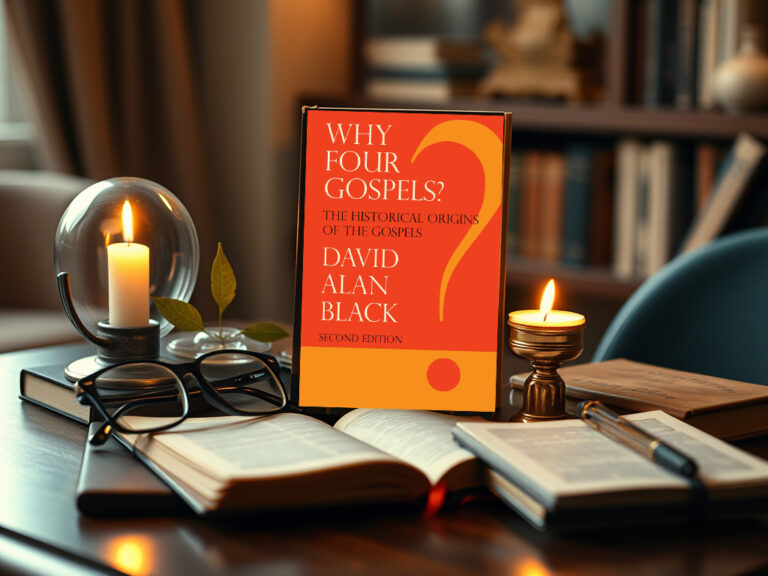Should we assume a scientific worldview when we come to interpret Scripture? —YES
[EDITOR’S NOTE: Not all post will have an opposing response. If you disagree with this one, please make your case in the comments.]
by Edward W. H. Vick
FOREWORD
After presenting a definition of the term ‘worldview’ we consider two specific examples, the ancient and the modern.
Then we note that one worldview has replaced another, and that the scientific worldview becomes the modern worldview which we accept as given. It has, shall we say since Galileo, come to replace the ancient worldview. Refusal to change leads to the irrationality of obscurantism.
The modern worldview becomes comprehensive and demands either inclusion or rejection of .previous patterns of thinking. We all live by this worldview, even if we create an opposite worldview when we tell our infants fairy tales and delude them about Christmas and its delights. We stand aloof from it to give the nippers a good time with Santa. They will have to come to terms with the problem later. Then we will have to be honest.
We then discuss what this implies for our interpretation and understanding of Scripture.
THE PROBLEM
Let’s first be clear that the worldview of most, if not all of us, who will read this is the modern worldview, within which we all do all of our thinking and decision making. This modern worldview is the scientific worldview. It provides the context for all of our thinking and decision making and acting. I say ‘all’ but some of us may want an opt out when it comes to making religious claims, and in our approach to Scripture. An anomalous situation arises if one takes a Scripture book to have divine authority and attempts to take all its claims as literal. It’s worth talking about!
This modern worldview emerged to replace an ancient and medieval worldview, the one which assumed that the earth was flat, that the earth was the center of the universe, that there was intercourse between the terrestrial and the supernatural, that remarkable things took place in the natural world. Indeed supernatural beings, demons and angels were to be taken into account to explain events that took place in the world for which no ‘natural’ explanation could be given. Demons and angels brought about evil and disease. Angels were the cause of good. Remarkable, previously unique, inexperienced and unrepeatable events demanded explanation from beyond the human and natural.
Ancient documents took for granted in their claims and in the stories they told that the universe was structured in three stories: the earth (flat), the heavens above and the waters beneath. Part of their worldview was that there was interaction between celestial beings, the gods or God above, and human beings below.
Scripture was produced within the context of such an ancient worldview. In its writings we find accounts of events the like of which we do not experience, have never experienced and do not anticipate we shall experience. Not being within the limits of our experience we believe they do not happen. We put them outside the bounds of possibility. So we do not think even remotely of their probability. We have no expectation that similar events might happen. We then question reports of such events, past and present. What this means for our understanding of such reports in Scriptural writings is that we look for a meaning within and behind the statements and narratives. The child, who once believed the narratives about Christmas to be literal accounts of past events, learns in becoming more mature later that there is a meaning behind the account of what he took once to be an historical account.
So we are faced with a basic question. How shall we interpret those passages and the overall story the Bible tells?
EXPOSITION
We do whatever thinking we do within particular frameworks. This is of course a metaphor. It designates the set of assumptions and beliefs we hold whenever we consider how to assess or interpret things. We hold different frameworks for different areas of our concerns. A framework is a set of assumptions. Some are very limited. But there is also an overall framework that provides for all our beliefs and attitudes. This we call a ‘worldview’. When we think about the world around us, the sky above, the depths of the oceans, the existence of microbes and the extent of the universe as well as the sensations we experience, and the demands made on us for belief and action, we exercise our thoughts within an overall framework. What we take for granted as background we call our ‘worldview’. We may not be able to articulate this set of assumptions even to ourselves. For example, the ancient person could not articulate that all his thinking was done within the assumption of a three storied universe: waters underneath, sky above and flat earth accompanied with the assumption that there was activity between the divine transcendent and the human earthly. (See diagram below).
We assume a causal relationship between certain events and reactions, historical, personal and physical. We have learned to make this assumption, at least after a childhood when we were bombarded with impossible and improbable tales. We know that some kinds of thing just do not happen, and we learn, if we pursue the matter, to give an account of the principles we take for granted in believing this and acting on our belief. Some kinds of thing are impossible. We have constructed a worldview, very different from that of our childhood. If we retained some of the assumptions inherited from our childhood, we would be led to give credence to very questionable beliefs.
It seems that it is so easy to focus on one issue and forget that a whole set of assumptions lies behind our thinking about it. It is easy to focus on the first chapter of Genesis and neglect the background of the ancient Hebrew assumptions behind it. We have our own and different set that leads to our conclusions about its interpretation. For to our thinking as a whole there is a background of assumptions and beliefs that determine how we shall think. That background differs from age to age and from culture to culture This package we call our ‘worldview’. It provides an orientation that influences, determines how the individual or society interprets and acts within the world.
As cultures differ worldviews differ. As cultures advance and knowledge increases so adjustments take place in the worldview. One worldview replaces another, or may sit side by side within a multi-layered culture. What has happened is that one worldview may become dominant and demand inclusion and if necessary replace another. The scientific worldview replaces the ancient worldview and then becomes the modern worldview. “Time makes ancient good uncouth.” Refusal to change means irrationality and regress. That exhibits itself in bad judgment and irrationality in reasoning and in act.
What happens then when one who lives within the modern, western culture attempts to understand and interpret writings and artifacts from another world, from within a previous worldview? It is sometimes necessary to bracket one’s own assumptions in order to get within the mindset of the culture and the literature one is studying, to understand their world from an ancient or medieval point of view. But the bracketing ends with a return to one’s own worldview.
Obviously there is conflict, whether within the individual or within the society when worldviews get replaced. Remember Galileo? His discovery that the earth was not the center of the universe was the immediate issue. What it called into question however was a whole system of religious thought underwritten by a powerful autocracy. That society endorsed a worldview now becoming outmoded, even if not recognized at the time.
What are we to make of the struggle to hold incompatible worldviews? It is the situation where one cannot reconcile religion with the rest of one’s knowledge and so one wants and tries to cling to both in the belief that both are good. So arises what has been called the problem of the two compartments. It does not solve the problem but restates it. It produces the unstable equilibrium of the divided mind. One is reminded of the report of the words of a little girl. “Of course I know that Santa Claus isn’t real, but I don’t want anybody to tell me.” That stance is similar to what some biblical literalists are thinking. To maintain such double-think leads to self-deception. The cure is to acknowledge the repression of the one attitude, and the incompatibility of the two views in unresolved conflict.
Literalism is the interpretation of biblical statements for their literal meaning. Literalism is an extreme view of Scripture. It involves assuming an ancient worldview, the worldview that provided the context in which the Hebrew and Christian Scriptures came into being. When a story is told or an account of an event is given, it is to be taken as a true report of an actual event or phenomenon. This is an extreme view, especially when taken with the belief that the words and sentences are divinely inspired. This assumption constitutes part of a religious worldview. How can an ancient worldview we do not and cannot apply in our ordinary and contemporary living and thinking do service here? An ancient worldview accommodates all kinds of miraculous events. Hebrew and Christian Scripture emerged within the context of such a worldview. Can we allow for them what we would never allow if similar such ‘reports’ were presented to us today?
So what results when the literalist, who for all practical purposes takes quite for granted the modern worldview as we all do when living our ordinary lives, for religious purposes, brackets or replaces it with the ancient worldview, in the hope that he can thereby justify his interpretation of Scripture. As we have seen, the result is the divided mind of the two compartments. Something has to change to restore unity.
If we understand what can and cannot happen we have criteria for assessing reports, or purported reports in ancient documents. We understand what can and cannot happen, what is probable and what is not probable from our own experience and from reports, contemporary and historical, and so we are justified in the assumptions that constitute part of our contemporary worldview. We cannot take literally, as true reports of actual past events statements about animals speaking (Balaam’s ass), about the sun and moon standing still in the firmament above the flat earth by command (Joshua), extra terrestrial beings producing wholesale massacre (in the Assyrian camp), claims that human bodies move from earth into space etc. etc.
A worldview will contain various paradigms. A paradigm is a mode of thinking, a set of assumptions or a basic principle that guide particular areas of our thinking. Within the worldview the use of different paradigms will lead to different interpretations, theories, assertions about reality. Take these examples: the paradigms of God as judge with apocalyptic intentions, and God as loving and merciful and forgiving.
1. God as judge is in cosmic conflict with opposing supernatural, celestial creatures and the conflict involves earth and its creatures. It is exemplified in the apocalyptic passages in the book of Revelation. The classic example is Milton’s Paradise Lost. A contemporary example is expounded in the book, The Great Controversy. God is eventual master in a continuing cosmic conflict. But only after painful destruction of the opposition in a universal blood bath of fire.
2. God as love, giving life freedom and meaning freely to humanity in the person of Jesus.
The paradigms, taken as basic models for an overall interpretation of Scripture, and for the construction of a theology with their dominating images of God, lead to conflict. At certain points if not overall, these two directing and conflicting images of God will be set against each other, and one be preferred as the dominating one in a church’s theology. There is no question which one that should be.
We have now considered how our worldview makes it possible or impossible for us to believe some reports of extraordinary events, non-repeatable events that run counter to the regularity of the natural world. But in approaching and interpreting Scripture we must ask an essential question. Since the writings of Scripture are expressed within the context of an ancient worldview, that worldview providing the context for its overall message, how do we get that essential message while recognizing that we do not and cannot accept the framework within which it was and is expressed? That is the task for serious interpreters to answer when they assume quite rightly that Scripture, carefully interpreted, is to provide the basic material for constructive belief. The questions are: “What is the message behind the form in which it is expressed?” And, “What is an adequate way of expressing that message?”
SUMMARY
1. We accept the modern worldview for all intents and purposes.
2. We reject the ancient worldview.
3. We also replace its forms of expression.
4. The urgent task is to find the essential message of Scripture plus our own adequate means of expressing it.
________________
Diagram 1 is of the flat earth of the ancients. In the languages of the Bible (and in others) ‘heaven’ means ‘sky’. The sky was above a flat earth. God dwells above the firmament above the earth, the terms ‘above’, ‘below’, ‘up’, ‘down’ to be taken quite literally. Sun and heavenly bodies move across the firmament.
Diagram 2 represents the spherical earth, moving around a central sun, as do the other planets. The spherical earth has a second motion as it rotates on its axis. The earth is a small body in an expanding universe of staggering extent, measured in millions of light years.








Thank you for the significant depth of this post. You give us much to ponder.I want to read this overall few times. Gratefully, Bob
The representation of modern cosmology in its 4 dimensional space-time on a TV program I watched was wonderful in illustrating special relativity and light cones and the failure of intuitive simultaneity – but the image looked just like the drawing at the beginning of my edition of Paradise Lost, a world hung by a chain from the throne of the Most High. We have just made that world’s description more mathematical and have removed the concept of time as instantaneous everywhere.
I recall a description of a Rastafarian party to an observer who knew no Rastafarians. He was told: there are people in there who believe the earth is flat, and people who do not. Same people!
I don’t want to justify confusion because I think the modern flat earth folk are on an isolated, self-protective philosophical journey and like many who want to convince you of their way, it is a power trip. We need imagination as well as science to guide us through and to true simplicity from these ancient and foreign text. The ancient stories are too lovely and multi-faceted to let them stand in a false literalism. Love the Young-Earthersif you will, but undermine the falsity with a true word in or out of season.
So when the sun stands still, we have an image of the battle moving momentarily at the speed of light, or we have the knowledge of the presence of the kindling fire that burns without consummation yet invites us so deeply into itself that we lose track of time.
If one is going to be a literalist, one must read the original tongues at a minimum. Being literal with one’s own cultural assumptions and the decisions of a translation from 400 years ago is just irresponsible ignorance.